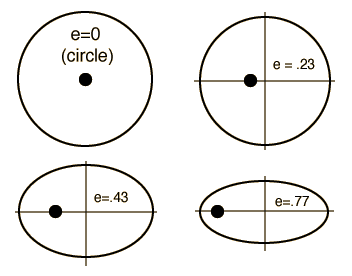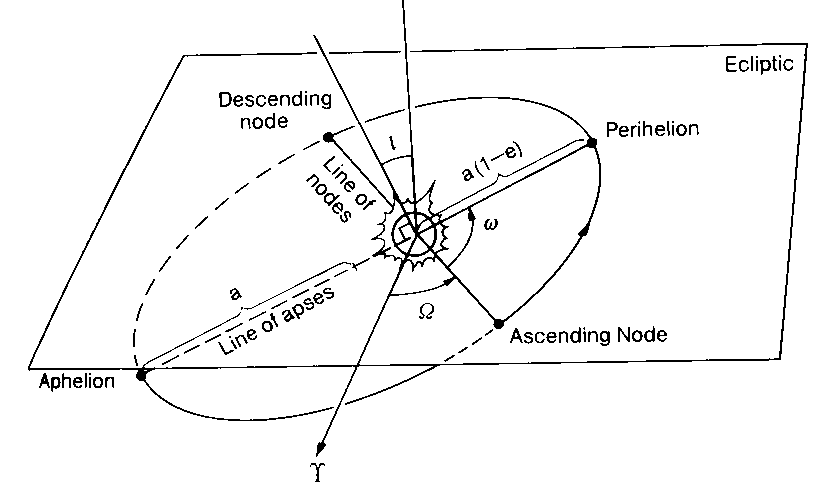All bodies, such as asteroids that are in an orbital (gravitationally-bound) relationship with another solar system body have orbital elements that describe the precise nature of the orbit. Asteroids, like their larger cousins, the major planets orbit our sun, and their orbits can be described by six orbital elements, sometimes referred to as Keplerian elements, after Johannes Kepler who first developed laws of planetary motion.
The six elements include:
Eccentricity (e)
Semimajor axis (a)
Inclination (i)
Longitude of the ascending node (☊ or Ω)
Argument of periapsis (ω)
True anomaly (ν, θ, or f)
The first two, eccentricity and semimajor axis describe the shape of the orbit, specifically eccentricity describes how much the elliptical shape of the orbit deviates from a circle, and the semimajor axis indicates how large the ellipse is (or the mean radius of the elipse). The remaining four elements describe exactly how the asteroid's orbital elipse is oriented in space, with respect to arbitrary frames of reference. For example inclination describes the angle of the orbital plane of the elipse with respect to the plane defined by earth's orbit (known as the ecliptic). The longitude of the ascending node indicates the angle between a fixed point of celestial longitude called the vernal point (or Vernal Equinox; arbitrarily the sun's point on the first day of Spring, symbolized as ♈ ) to the point on the asteroid orbit where it crosses upward through the ecliptic plane. The Vernal Equinox is analagous to Earth's zero longitude being defined arbitrarily at Greenwich, UK. The argument of periapsis specifies the angle measured between the point of the ascending node and the perihelion point of the asteroid's orbit, this essentially defining the direction of the long axis of the orbit elipse. Finally, the true anomaly indicates exactly where along the orbital elipse the asteroid is located at a specific time (defined by the angle drawn from the objects perihelion point to the current position of the object).


Left figure shows elipses with varying eccentricity values. Right figure shows orbit semimajor axis (a), and its relation to eccentricity (e); longitude of ascending node (Ω)with respect to the Vernal Equinox (♈); the agument of perihelion (ω). Diagram from University of Arizona Astronomy 250 lecture notes.

Above figure shows inclination (i), longitude of ascending node (Ω) with respect to the Vernal Equinox (♈); the agument of perihelion (ω), and the true anomaly (ν). See more about Orbital elements.



